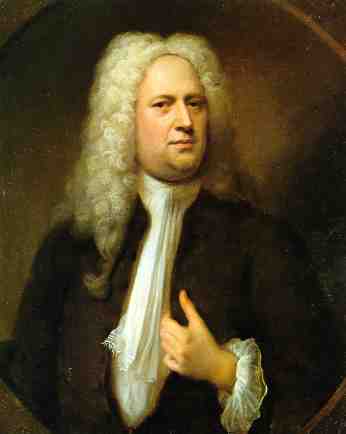 Georg Frideric Handel was born on February 23, 1685. He left us a body of musical work that is unsurpassed. His inescapable masterpiece is the sacred oratorio called Messiah, which is a comprehensive history of Western music and a singable systematic theology all wrapped up in one.
Georg Frideric Handel was born on February 23, 1685. He left us a body of musical work that is unsurpassed. His inescapable masterpiece is the sacred oratorio called Messiah, which is a comprehensive history of Western music and a singable systematic theology all wrapped up in one.
G.K. Chesterton once said that popular misconceptions are almost always right, and the public mis-perception of Messiah is a good case in point. Most people think of it as a Christmas concert that ends with the Hallelujah chorus. But it is not primarily about the Nativity of Christ, and the Hallelujah chorus company only signals the end of part II, while the true conclusion is “Worthy is the Lamb, Amen,” which comes after another dozen numbers, some of them quite long.
So why do people think of Hallelujah as the end of the Messiah? Certainly it is a memorable moment, so climactic that anything which follows it is in danger of being rendered anti-climactic. Handel is so judicious and understated in his deployment of major orchestral force that by the time he unleashes the torrential outpouring of the Hallelujah chorus, his intent is to blow the audience away; which he does.
But there may be another reason people think of Hallelujah as the end of Messiah: this might be where the audience’s attention span is finally stretched to its breaking point. It might just be that this oratorio is too long. I used to blame my own modern short attention span, and tell myself that back in the good old days before television, people sat through three hours of oratorio without flinching or yawning once. That may be, but now I’ve seen most of Messiah performed over a dozen times, and have listened to recordings of the whole thing hundreds of times, and I think that after blaming myself I might have some blame left over for the artist. No matter how great a piece of art is, it needs to be of a scale that can be appreciated by a human audience. There are notes above the human range of hearing, but composers shouldn’t use them unless they’re performing for dogs. Similarly, there are very few numbers I could imagine omitting from Messiah, but the total composition is too big to keep in your mind all at once. I think the same might be true of Michelangelo’s Sistine chapel ceiling, which wants it both ways at once: it asks to be seen all at a single glance, but it covers too much surface area for the human eye to take it in at a glance and keep the details in meaningful relations. Messiah might be a bit like that, giving a partial truth to the popular misconception that it ends with the Hallelujah chorus.
And perhaps the misconception that Messiah is uniquely Christmas music also contains some truth. It is of course false: Messiah covers a vast tract of salvation history, sweeping across the old covenant landscape, over advent, through the healing ministry of Christ, his death, resurrection, ascension, and enthronement, and on through the age of the church’s gospel proclamation to the ends of the earth, to the final eschatological triumph of our God and of his Christ in which the redeemed rise from the dead and sing all together, Worthy is the lamb. Why, in light of this long sweep from Isaiah to Revelation, do people remember only the Christmas section, forgetting everything from Behold the Lamb to Worthy is the Lamb?
For one thing, the advent and nativity sections, which are among the most striking and memorable portions of Messiah, have also the great advantage of occurring early in the evening, when your attention is still sharp and your bottom is not sore. The pastoral scene of shepherds and angels is also the part of the text which most nearly approaches direct narration of an event from salvation history. You could almost film that section, and it provides a concreteness, a geographical distinctness, and a specificity of mental image which is crucial for the rest of the work. It makes you think of sheep. And then section two begins with Behold the Lamb, moves through All we like Sheep have gone astray, and part three ends with Worthy is the Lamb, or as the librettist of the piece, Jennens, summarizes, “the glorification of the Messianic victim.” He came to accomplish a costly redemption; the incarnation is ordered to the passion; thus the Bible teaches and the church confesses as it always has.
In the words of Revelation 5:13 and Handel’s Messiah, Amen.